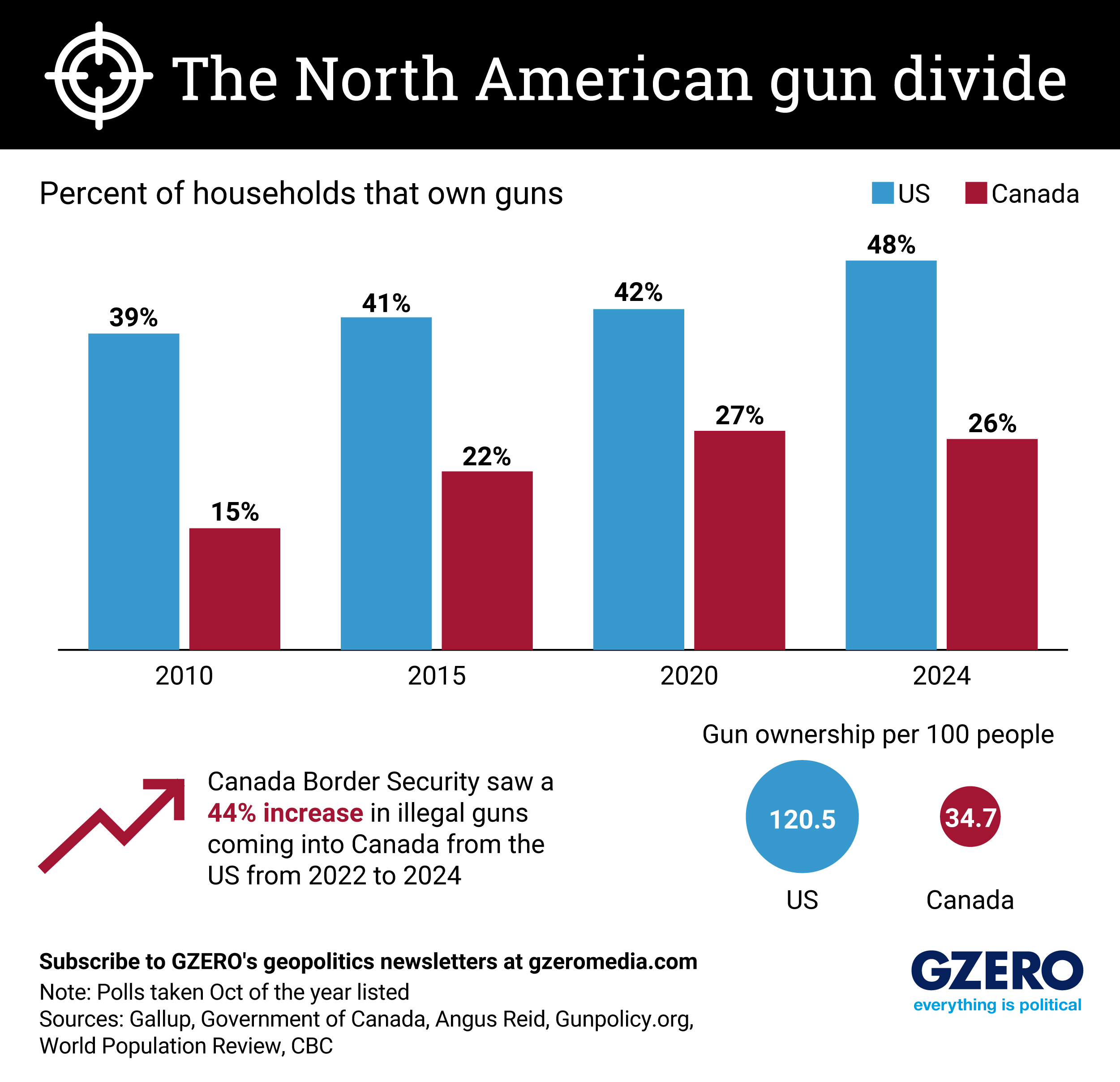March 13, 2025
Gun ownership rates have been rising in both the US and Canada, despite the two countries having drastically different firearms regulations. In the US, there are some federal protections, such as mandatory background checks for firearm purchases from licensed dealers, and restrictions on machine gun and suppressor ownership, as well as rules barring convicted felons and the mentally ill from owning guns. But the Second Amendment’s right to bear arms, coupled with lax gun laws in some states, and a cultural emphasis on personal protection, has enabled gun ownership to become widespread.
In Canada, however, guns are primarily viewed as tools for hunting or for sport, and ownership is subject to strict regulations, including certified coursework and background checks. Moreover, nearly 200 types of assault-style firearms are banned. As a result, the US far surpasses Canada in personal firearm ownership. There are 120 guns per 100 people in the US – yes, more than one per person – compared to 35 per 100 people in Canada.
But guns in the two countries are also deeply connected. Relaxed restrictions on buying firearms in many states along the US-Canada border have fueled a surge in illegal gun smuggling into Canada. From 2022-24, Canadian border security saw a 44% increase in firearms illegally entering from the US. The issue is under renewed scrutiny as the Trump administration imposes tariffs on Canada, pressuring it to curb fentanyl trafficking. Many Canadians argue that the illegal flow of US firearms poses an equally serious threat to public safety.
More For You
- YouTube
Gotta maximize sleigh-holder value. #PUPPETREGIME
Most Popular
- YouTube
On Ask Ian, Ian Bremmer breaks down the steady escalation of US pressure on Venezuela and why direct military action is now a real possibility.
US President Donald Trump arrives to announce reciprocal tariffs against US trading partners in the Rose Garden of the White House in Washington, DC, USA, on April 2, 2025.
POOL via CNP/INSTARimages.com
From civil conflicts to trade wars to the rise of new technologies, GZERO runs through the stories that have shaped this year in geopolitics.
Ukrainian serviceman walks near apartment buildings damaged by Russian military strike, amid Russia's attack on Ukraine, in the frontline town of Kostiantynivka in Donetsk region, Ukraine December 20, 2025.
Oleg Petrasiuk/Press Service of the 24th King Danylo Separate Mechanized Brigade of the Ukrainian Armed Forces/Handout via REUTERS
Ukrainian intelligence services assassinated a senior Russian general on the streets of Moscow on Monday, detonating a bomb strapped to his car.
© 2025 GZERO Media. All Rights Reserved | A Eurasia Group media company.
